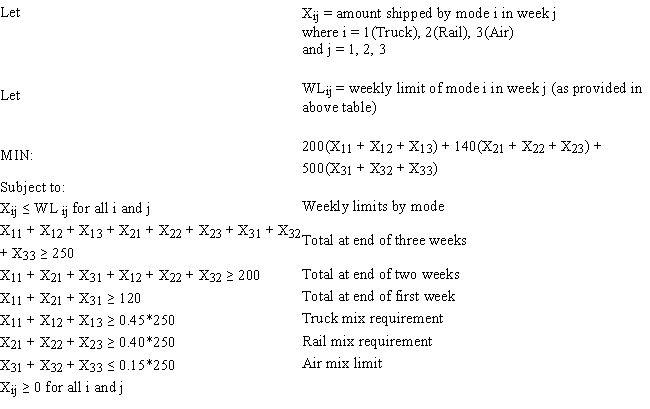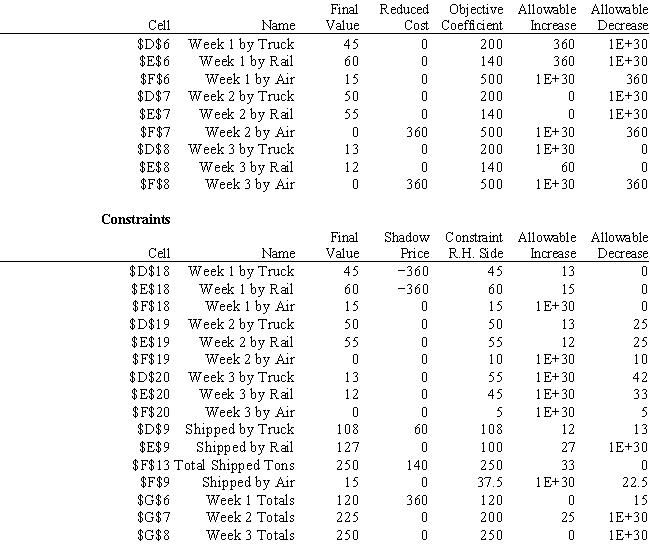Exhibit 4.1
The following questions are based on the problem below and accompanying Analytic Solver Platform sensitivity report.
Carlton construction is supplying building materials for a new mall construction project in Kansas. Their contract calls for a total of 250,000 tons of material to be delivered over a three-week period. Carlton's supply depot has access to three modes of transportation: a trucking fleet, railway delivery, and air cargo transport. Their contract calls for 120,000 tons delivered by the end of week one, 80% of the total delivered by the end of week two, and the entire amount delivered by the end of week three. Contracts in place with the transportation companies call for at least 45% of the total delivered be delivered by trucking, at least 40% of the total delivered be delivered by railway, and up to 15% of the total delivered be delivered by air cargo. Unfortunately, competing demands limit the availability of each mode of transportation each of the three weeks to the following levels (all in thousands of tons):  The following is the LP model for this logistics problem.
The following is the LP model for this logistics problem. 

-Refer to Exhibit 4.1. The Week 1 by Truck and Week 1 by Rail constraints each have a shadow price of −360. What do these values imply?
Definitions:
Milgram Experiment
A psychological experiment conducted by Stanley Milgram in the 1960s to study obedience to authority, where participants were instructed to administer electric shocks to another person.
Stanford University Prison Experiment
A psychological study conducted by Philip Zimbardo in 1971 at Stanford University, where students were assigned roles of prisoners and guards to explore the effects of perceived power.
Generalization
Drawing a conclusion about a certain characteristic of a population based on a sample from it.
Logical Support
The provision of reasons or evidence to justify a claim or argument.
Q7: Which of the following accurately reflects Swiss
Q12: A company wants to locate a
Q14: Subsequent to the Asian "flu" financial crisis,
Q33: No company uses the pooling-of interests consolidation
Q41: Why does Switzerland have one of the
Q42: Social responsibility information<br>A) focuses on accountability to
Q43: The slope of the level curve for
Q44: In a mathematical formulation of an optimization
Q45: Integer programming is an example of:<br>A)a prescriptive
Q52: In the shortest route model,the originating and